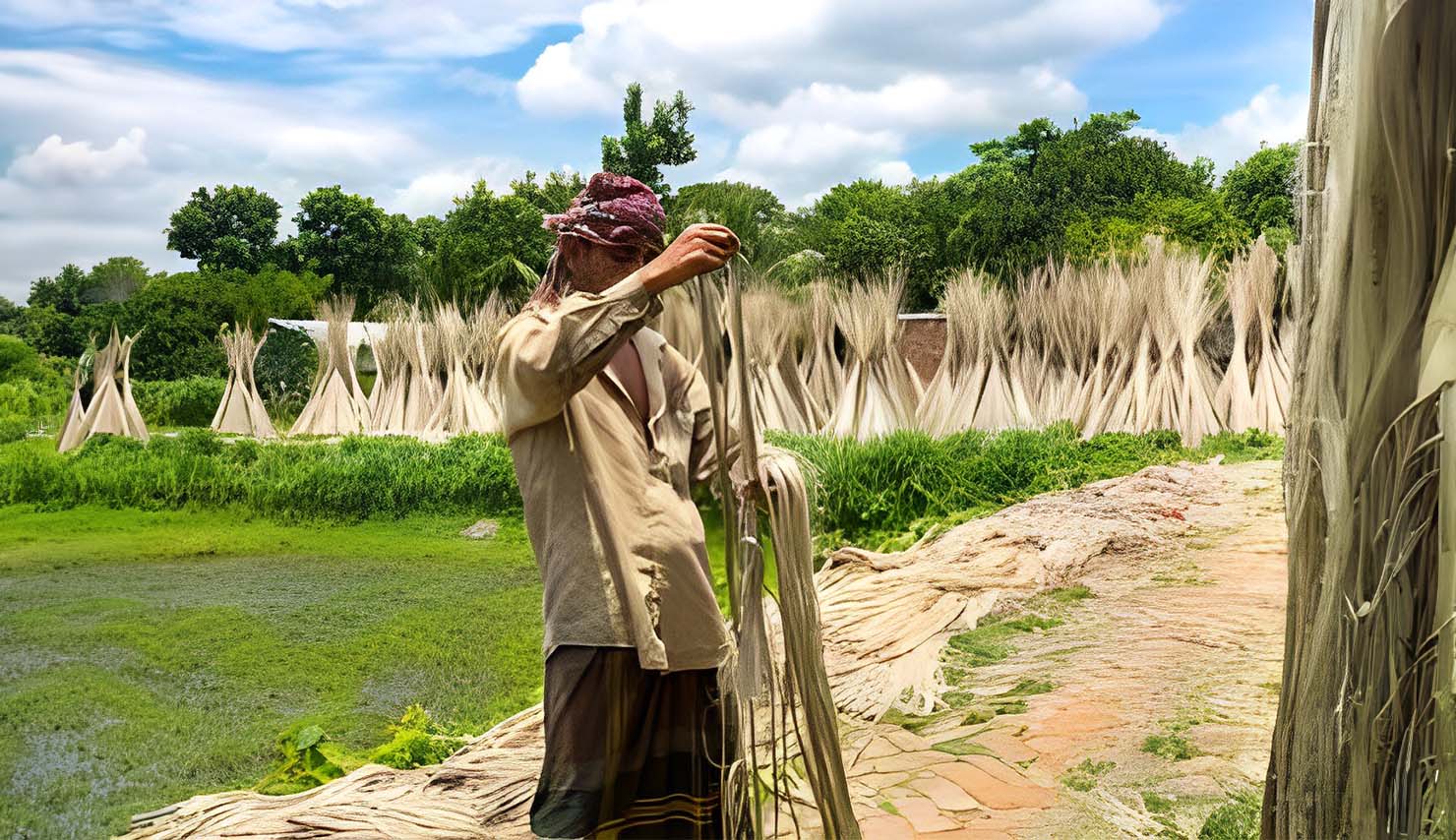
By Dr. R. K. Mitra & Siddharth Subudhi
Until recently, jute was an essential mainstay of many homes in India. Our parents used to carry a jute bag during their weekly grocery run. Jute was a part of our lives in multiple other ways right from our carpets to our sofas.
The insurge of plastics into Indian households has shown the door to many such traditional fibres from our daily lives. Jute’s contemporary use has become largely limited to our public distribution system for food grains. Plastic offered us a cheap solution, and that’s how it has become a characterizable trait of the anthropocene.
Due to the indisputable advantages derived from the use of plastic, every action of decision makers to limit the production or use of plastics is unavoidably affected by economic evaluations, as well as by the deficiency or drawbacks of alternative materials, rather than by environmental reasons.
It however needs to be re-evaluated because plastics will continue to exist for centuries after its use. With it infecting our bio ecosystems, leakage of plastics into our food and water systems are an emerging area of inquiry.
As plastics have become an inseparable part of our daily existence, with microplastics (ranging from 1 µm to 5 mm) and the potentially more menacing nanoplastics (<1 μm) emerging as a new focal point in contemporary discourse.
The escalating ubiquity of these microscopic plastic particles has raised concerns about their impact on human health, particularly as nanoplastics, due to their diminutive size, present an increased susceptibility to infiltrate the human body leading to reduced lifespan and increased mortality. A recent study by researchers from the United States has revealed that our bottled water may contain up to 100 times more plastic than was previously estimated.
The global surge in plastic consumption each year has propelled plastic pollution to the forefront of environmental apprehensions, with microplastic contamination pervasive not only in diverse ecosystems but also infiltrating human biological samples.
Beyond the established realm of microplastics, recent revelations indicate that the disintegration of plastic polymers extends further, giving rise to nanoplastics in quantities that defy previous expectations. This escalating issue necessitates a reevaluation of our reliance on plastics.
In India, our Prime Minister’s call to ban single-use plastics has set the right impetus for us to look for environment friendly alternatives such as jute for packaging.
A pioneering study in 2022 affirmed the presence of microplastics in all commercial branded and non-branded sugar considered for study. A report by OECD-FAO has projected that by 2030 India will experience the largest increase in the level of sugar consumption based on population growth and the expansion of the food and beverage industry.
The expansive increase in consumption of products such as sugar traditionally packaged in plastic materials will increase the per person ingestion of micro and nano plastics. As sugar is a pervasive product for consumption, so is the microplastics that it carries due to its packaging.
While we are making a concerted effort to abolish single-use plastics from our daily lives, we will need a two-pronged approach by substituting plastic in packaging of food items. Alternatives such as our home grown, golden fibre jute can be an excellent option because it is carbon neutral.
Jute for packaging is not new. Since 1987 through the Jute Packaging Materials Act, the Government of India has continued to pack hundred percent of foodgrains procured in jute packaging for our PDS.
The Act has also mandated packaging of twenty percent of sugar in jute bags. In its earlier renditions, it even had provisions for the packaging of cement and fertilisers. The uptake of jute for packaging is an imperative for products such as sugar. A life cycle assessment conducted by TERI on Jute sacks versus HDPE sacks for packaging has revealed that the environmental impact of plastic for packaging far outweighs that of jute.
In fact, several Scientific studies affirm that a single hectare of jute can sequester approximately 15 tonnes of CO2 while concurrently releasing around 11 tonnes of oxygen throughout a season, effectively mitigating atmospheric CO2 concentrations. Perhaps an environmental tax levied on plastic bags would provide a level playing field with the sustainable natural fibre based packaging.
Jute emerges as a formidable solution in our quest for net zero. Unlike its plastic counterpart, jute cultivation acts as a carbon sink, absorbing significant amounts of carbon dioxide – a key greenhouse gas implicated in global warming.
Boasting a rapid biodegradation timeline spanning weeks to months, jute stands in stark contrast to plastic’s enduring 500-year environmental stranglehold. Beyond its environmental virtues, jute cultivation demands less water, promotes soil fertility through judicious crop rotation, and serves as a robust and reusable material.
We need to see the re-emergence of jute as a packaging alternative. Jute has been used in India for several milleniums, and even today India continues to dominate global jute production. The jute versus plastic discussion for packaging leaves no scope for debate. Jute has proven itself not only as a sustainable alternative, but also a future looking one where human health and well-being is given precedence over economic valuations.
In light of the escalating threat posed by plastic pollution, our collective responsibility to adopt sustainable alternatives becomes increasingly paramount.
The recent revelations about microplastics contaminating our bottled water and infiltrating our food supply present an urgent call to action. India’s commendable initiative to ban single-use plastics, spearheaded by the Prime Minister, signifies a pivotal step toward embracing eco-friendly alternatives.
Among these alternatives, jute emerges as a viable Atmanirbhar solution.
This article first appeared in ET Government, https://government.economictimes.indiatimes.com/blog/plastic-packaging-threatens-the-right-to-life-jute-emerges-as-a-viable-atmanirbhar-solution/106958544?utm_source=latest_news&utm_medium=homepage